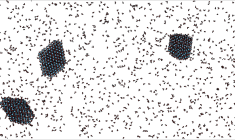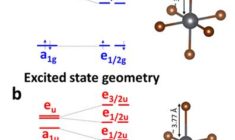Nanotechnology & computational chemistry
Nanotechnology researchers will find various useful computational tools in the Amsterdam Modeling Suite.
Our ADF molecular DFT code is a powerful tool for studying optical properties of nanoparticles, due to efficient and accurate treatment of relativity, making use of symmetry, fast TDDFT methods, and specialized exchange-correlation potentials. Advanced methods are available for environments and multi-level calculations.
Surface-enhanced Raman spectra (SERS), as well as hyper-Raman (SEHRS) and optical active (SEROA) spectra of molecules on large metallic nanoparticles are accessible through the DIM/QM methodology.
With DFTB and its time-dependent extension TDDFTB, spectroscopic and dynamical properties of very large nanoparticles such as quantum dots are possible, including excited state dynamics and charge transport with non-equilibrium Greens functions (NEGF).
DFTB has been extended by the recent GFN1-xTB method from Grimme, allowing for highly efficient quantum tight-binding calculations of all elements up to Z = 86.
ReaxFF has been used widely in nanotechnology. For example carbon nanotube formation, nanoparticle aggregation and Pd nanocatalysts under operating conditions with grand-canonical Monte Carlo (GCMC). With the latest force field fitting tools in the Amsterdam Modeling Suite, fitting ReaxFF parameters to the problem at hand becomes possible as described in the new Advanced Reparametrization Tutorial.





